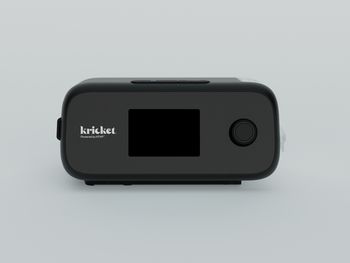
7 telemedicine myths debunked
The market for telemedicine is big and growing, yet despite the growth in telemedicine, many physicians resist it.
The market for telemedicine is big and growing.
By the end of the year,
Yet despite the growth in telemedicine, many physicians resist it. This is partially because of misconceptions about telemedicine that have developed over the years, in particular those around complexity and regulation. There also is a fair amount of inertia that comes with adopting something new.
While we can't stop fear of the new, we can debunk some of the myths that have developed around telemedicine.
Myth #7: Telemedicine is too complex.
Like most things, telemedicine can be made complex and overwhelming, but that doesnât mean that it has to be.
At root, telemedicine is no different than the remote communications tools that most doctors use every day at home. You share images and video, exchange notes and videoconference with people on your computer or smartphone with tools such as Skype. This is the essence of telemedicine, tooâit doesnât have to be more complex than that.
Yes, there are extra layers of consideration. Unsecure connections wonât do, and good archiving and privacy are important for regulatory reasons. But fundamentally, telemedicine is just an application of technology most of us already use.
The telemedicine features that patients most want, according to research by McKinsey & Company, are simple technological functions like online appointment scheduling and being able to remotely connect with a physician for answers to basic questions. This does not require overly-complex technology.
Myth #6: You must do a physical exam.
Many physicians argue that physical exams are necessary for quality care. This certainly is true for some situations, but it isnât a hard-and-fast rule. Physicians already deliver medical advice via telephone, and telemedicine just expands on that practice.
For many minor but urgent conditions, a patientâs medical history and reported symptoms are all that are needed for diagnosis. Further, telemedicine can serve as a more convenient follow-up or post-op option for check-ins that donât require a physical exam.
Myth #5: Compensation is a problem.
Actually, telemedicine improves the bottom line for most medical practices. It can reduce appointment cancellations, improve patient flow, monetize after-hour consultations, attract new patients and help retain existing patients, as outlined in a
More to the point, recent state legislation has made it easier for medical practices in many states to seek reimbursement for telemedicine services. Such âparity lawsâ currently exist in 24 states and are pending in several more. The days of telemedicine compensation issues are past.
Myth #4: It doesnât work with electronic health records (EHRs).
Some telemedicine solutions that arenât specifically built for healthcare can struggle with EHR integration. Since EHRs now are a central part of almost every medical practice, however, the vast majority of telemedicine options now either directly interface with EHRs or can be exported into a physicianâs EHR system.
Myth #3: Telemedicine costs too much
Just like the myth about complexity, telemedicine can cost a lot if you let it. It need not be expensive, however.
For instance, offering virtual visits for routine check-ups or appointment follow-up is no different than talking with family members over Appleâs FaceTime. All that is needed is a computer with a web camera, along with secure real-time communications software that can be purchased online as a cloud service.
Not all telemedicine requires telesurgery precision and a specialized kit. Most telemedicine is a lot more mundaneâand affordable.
Myth #2: Telemedicine is not secure.
Some consumer-grade video conferencing solutions such as Skype are inappropriate for the privacy and security requirements of telemedicine. If banks can share financial information, however, you know there is a way to make telemedicine secure.
There are many ways to offer secure telemedicine, in fact. For instance, the aforementioned video chat provider Agora.io uses the same end-to-end encryption that bank web sites employ.
Many HIPAA-compliant options exist, so security is a particularly minor telemedicine concern.
Myth #1: Patients wonât use it.
Actually, patients prefer telemedicine.
Videoconferencing with a physician is preferred by 60% of patients under the age of 34, according to a
With roughly 97% of patients frustrated by hospital wait times,
So even if you have an aversion to the new, your patients will thank you for launching a telemedicine initiative. Telemedicine can be secure, economical, efficient, and can improve satisfaction with your medical practice. Donât let the myths around telemedicine dissuade you.
Are there any other possible myths holding you and your practice back from implementing telemedicine? If so, what are you worried about?
Peter Scott is a journalist and editor who has been covering healthcare, business and lifestyle trends for more than 20 years. You can contact him at
JT Ripton is a freelance healthcare, technology and business writer out of Tampa. He loves to write to inform, educate and provoke minds. Follow him on twitter
Newsletter
Stay informed and empowered with Medical Economics enewsletter, delivering expert insights, financial strategies, practice management tips and technology trends — tailored for today’s physicians.








